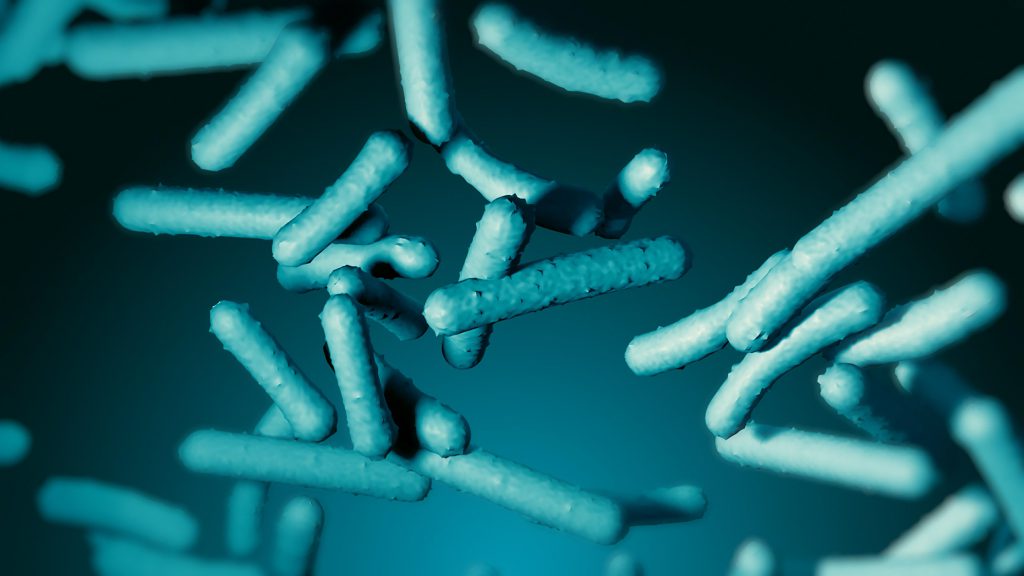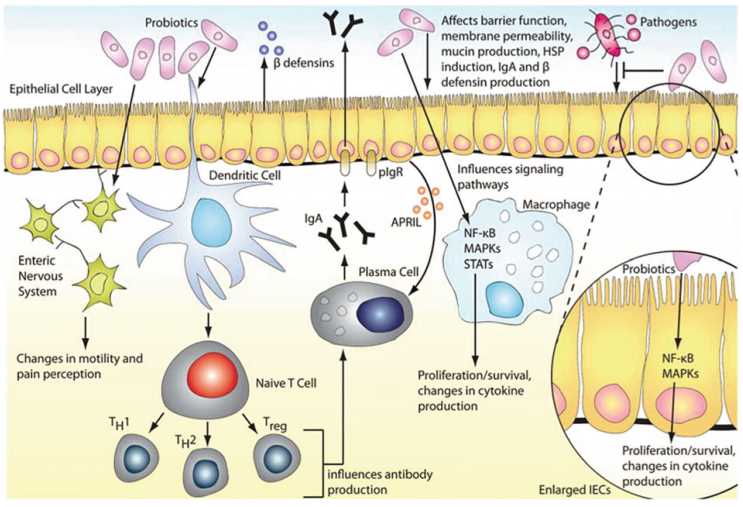Connie: What a wonderful Saturday evening. Hello, everyone. Welcome to our new episode that provides information on probiotics. In the last episode, Dr. Hofstadter concluded the main characteristics of probiotics for us, which include host-related stress tolerance, adhesion, and antibacterial activity. Understanding these characteristics will help us better select the perfect probiotics. And today, Dr. Hofstadter again joins us to provide more information on lactic acid bacteria as probiotics. Thank you for joining us today, Dr. Hofstadter.
Dr. Hofstadter: Good evening, everyone. Thanks for having me. I’m very excited to be here.
Connie: We all know that the intestinal microflora forms a relatively stable and highly diverse ecosystem. With the advancement of science, more and more people realize its impact on human health. In some cases, the intestinal microflora deviates from the normal structure, which can usually lead to systemic and localized diseases. So it’s important that we make efforts to regulate intestinal microbes. What are some ways to regulate intestinal microbes, Dr. Hofstadter?
Dr. Hofstadter: As you said, regulating the intestinal microflora helps to improve health. This can be achieved through different nutritional concepts. From some specific ingredients to complex diets, or through the ingestion of special live microorganisms, such as probiotics.
Connie: We are no strangers to probiotics. We have learned from previous episodes that probiotics are defined as “live microorganisms that are beneficial to the health of the host when given in an appropriate dose.” In the past few decades, the contribution of probiotics to regulating respiratory, gastrointestinal, and immune functions has begun to be fully understood and scientifically evaluated. Can you list some commonly used probiotics?
Dr. Hofstadter: So far, most commercial probiotics are lactic acid bacteria, especially Lactobacillus, but there are also bifidobacteria. A much smaller number of bacteria in the genera Lactococcus, Leuconostoc, Micrococcus, Streptococcus, and Enterococcus are also used as probiotics.

Connie: Lactic acid bacteria are often added to various products. Why are they so popular?
Dr. Hofstadter: It has been confirmed that fermented foods and beverages contain various nutritional and therapeutic properties. In this sense, fermented products such as milk have a positive effect on health, so lactic acid bacteria are good for them. These foods, beverages, and powders are highly accepted by consumers because of their high nutritional value and flavor.
Connie: What are the potential health benefits of probiotics in fermented milk?
Dr. Hofstadter: There are quite a few, like anti-tumor and anti-mutation activities, lower serum cholesterol levels, and prevention of gastrointestinal diseases.
Connie: Has there been any clinical application of probiotics?
Dr. Hofstadter: Probiotics are commonly used for gastrointestinal effects, and the best clinical benefit of probiotics is the treatment and prevention of antibiotic-related diarrhea. Their use can also be extended to oral, skin, and vagina health, as well as the treatment of liver disease, allergies, and metabolic diseases.
Connie: In addition to these functions, probiotics can also resist the invasion of pathogens. Remind us the mechanism of this pathogen resistance?
Dr. Hofstadter: Under normal circumstances, probiotics first colonize the intestinal tract, and then enhance the host defense system by inducing a systemic immune response in the mucosa. Including dendritic cell regulation or interaction with natural killer cells, balanced helper T lymphocyte response, secretion of polymeric immunoglobulin A, and self-limiting inflammatory response. Many studies have shown that lactic acid bacteria, mainly Lactobacillus, and bifidobacteria and their fermentation products, can improve innate and acquired immunity, reduce allergies, prevent gastric mucosal damage, and build defenses against intestinal infections.

Connie: That’s amazing. And probiotics and lactic acid bacteria are unique in their effective treatment of diseases, right?
Dr. Hofstadter: Exactly. The most representative probiotics in lactic acid bacteria include Micrococcus, Lactobacillus, Bifidobacterium, and Enterococcus. Because of their special properties, they can potentially prevent or treat various intestinal diseases, including constipation, colon cancer, and inflammatory bowel diseases. It has been recognized that lactic acid bacteria provide a wide range of benefits mainly in terms of host health. This is why they are considered probiotics.
Connie: Let’s dig deeper into the lactic acid bacteria. They have been used in the fermentation of various foods since ancient times and are one of the oldest methods of preserving food. Can you give us some background on their history and their characteristics?
Dr. Hofstadter: Sure. The use of lactic acid bacteria can be traced back to 6000 BC. Fermented specifications are found in dairy products and plants from 300 BC and meat from 1500 BC. The traditional or typical lactic acid bacteria are gram-positive, immobilized, catalase-negative, non-spore-forming, non-cytochrome, bacteria, or aerobic tolerant anaerobic coconut. They are all acid-tolerant and produce lactic acid as the main end product of carbohydrate fermentation.
Connie: What is the best source of lactic acid bacteria?
Dr. Hofstadter: Theoretically, lactic acid bacteria can be located in any product, such as plants, as well as ecosystems and human mucosal surfaces. Plants are the preferred source because of their metabolic activity and special flavor-forming properties.
Connie: There are many types of plants, does it mean that different types of lactic acid bacteria can be obtained?
Dr. Hofstadter: Absolutely. According to the competitiveness of microorganisms and natural plant antagonists, as well as the type, availability, and concentration of substrates in various physical factors, each specific plant species provides a unique environment. These conditions allow the development and growth of a typical epiphytic microflora through which populations emerge. A series of fermentation processes begin after the plant material is ready to be fermented.
Connie: Lactic acid bacteria can also be isolated from milk. Can you be more specific on the difference between lactic acid bacteria from different sources?
Dr. Hofstadter: Plant-derived lactic acid bacteria strains exhibit tolerance to high salt and high pH concentrations. Compared with milk-derived strains, the former has higher stress resistance and can ferment various types of carbohydrates. Similarly, the fermentation characteristics and zymograms such as peptidases, phosphatases, and lipases required for obtaining various fermented dairy products from commercial Lactobacillus plants and strains are not significantly different.
Connie: Is it safe to use lactic acid bacteria, especially in dairy products?
Dr. Hofstadter: In general, lactic acid bacteria are considered safe. They are very important in the dairy industry and are necessary for the production of several new and traditional dairy products.
Connie: Lactic acid bacteria are known to have probiotic activity and are beneficial in affecting gastrointestinal diseases. Is the activity of probiotics the reason why lactic acid bacteria are popular as functional products?
Dr. Hofstadter: Not only that. Recent studies have shown that in addition to probiotic activity, they can also produce different biologically active metabolites. Products containing various bioactive lactic acid bacteria with probiotic properties have indisputable benefits to human health.
Connie: Do Bifidobacterium and Bacillus belong to the category of lactic acid bacteria?
Dr. Hofstadter: Not really. Some bacteria of the genus Bifidobacterium and Bacillus are thought to have similarities, but they are not lactic acid bacteria. Bifidobacteria belong to another phylum and are generally considered to be lactic acid bacteria. In terms of phylogeny, only bacteria called lactic acid bacteria belong to the order Lactobacillus. Although some genera are farther apart, they have similar physiological characteristics. The metabolism of lactic acid bacteria is different and unique, and they have no genetic relationship. Similarly, some bacilli, such as Bacillus coagulants, are used to produce lactic acid as the only fermentation product of pentose and hexose. However, in this case, the metabolism is also different.
Connie: In other words, lactic acid bacteria can be distinguished from other bacteria utilizing metabolism and metabolites. What factors affect the metabolic activity of lactic acid bacteria?
Dr. Hofstadter: Lactic acid bacteria are strongly adapted to nutrient-rich niche environments. This will lead to a significant reduction in their metabolic capacity. They are classified as harmful microorganisms because they rely on vitamins, precursor nucleic acids, and amino acids from external or exogenous sources.
Connie: This does not sound good for industrial production?
Dr. Hofstadter: That’s right. This is an obvious disadvantage. Because the required components are very expensive, and usually the purification of the product from the growth medium is very complicated. These microorganisms have a fairly efficient metabolism, with only a few certain products and high flux. In addition, this efficiency benefiting from adaptation is also reflected in their genomes.
Connie: It is recognized that lactic acid bacteria have a wide range of benefits for host health, which is why they are considered probiotics. In other words, live microorganisms used in appropriate amounts are good for the health of the host. That’s it for our program today. Thanks Dr. Hofstadter for sharing your insight on probiotics and lactic acid bacteria. And thanks everyone for tuning in. We will continue the discussion on the carbon metabolism of lactic acid bacteria next Saturday. See you next time.
Dr. Hofstadter: Thanks everyone. I hope we will see you next time.
